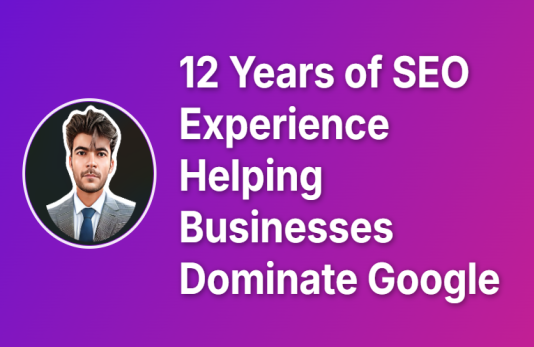LinkedIn SEO Mistakes You Must Avoid to Boost Your Visibility
If you want to boost your visibility on LinkedIn, it's key to avoid common SEO mistakes. Many users make simple errors that hurt their profiles in search results. Here are some common mistakes and how to fix them:
- Neglecting Keywords: A big mistake is not using the right keywords in your profile. Do some keyword research for LinkedIn. Find terms related to your job and skills that employers might search for.
- Incomplete Profiles: If your profile is not fully filled out, you might miss out on opportunities. Make sure every section, like the summary and experience, has detailed information about your career.
- Ignoring Headline Optimization: Your headline should be more than just a job title. Use this space to show what makes you unique and include important keywords.
- Overlooking Visual Elements: Don’t underestimate images! Optimizing images on LinkedIn helps with engagement. Use clear, professional photos for your profile and cover image. Remember to name files with relevant keywords.
- Underutilizing Recommendations: Recommendations from colleagues or clients can boost your credibility but are often overlooked. Ask for endorsements after finishing projects to build your profile's strength.
By fixing these common LinkedIn SEO errors, you can improve both your ranking and overall engagement on the platform.
Why LinkedIn SEO Matters for Professional Networking
Understanding why LinkedIn SEO is important can really help you grow your online presence. With over 900 million members, knowing how to use LinkedIn well can drive traffic toward your personal brand or business.
Professional networking on LinkedIn connects people from different fields without worrying about distance. By using strategic keywords in your profile, you can show up in searches by others looking for talent in your industry.
Engaging posts keep you visible among your connections and attract new ones naturally over time! This steady activity builds authority in your area of expertise, which leads back to driving traffic through meaningful interactions with peers and potential clients.
Joining groups also helps foster discussions about relevant topics in your field, creating chances for valuable insights that could lead to future business opportunities.
The Basics of LinkedIn SEO: Keyword Research and Profile Optimization
To effectively optimize your presence on LinkedIn, it's crucial to focus on keyword research and profile optimization strategies!
First up is figuring out effective keyword usage. Identify phrases linked to job roles or industry standards using tools designed for trending search terms connected to what you want from your profile.
Next, pay attention to formatting each section clearly (like the Summary Section). Each point should highlight achievements with measurable results—like “boosted sales by 30%” instead of just listing tasks without context.
Don't forget about visuals too! They are vital for making a good impression and help keep viewers interested in what you've got to say.
On-Page Optimization Mistakes and Solutions
On-Page SEO Mistakes: Title Tags, Descriptions, and Headlines
Your LinkedIn profile is like your online resume. It can make a big difference in how easy you are to find. One big mistake many people make is not optimizing their title tags and headlines. Your headline should say more than just your job title. For example, instead of "Marketing Manager," try "Digital Marketing Manager | SEO Specialist | Content Strategist." This way, people can see what you do right away.
Don't forget about meta descriptions for LinkedIn profiles. Even if they don't directly affect your rank, a good summary can encourage people to click on your profile when it appears in search results. Keep your meta descriptions short but meaningful, sharing who you are while using keywords that fit.
Also, make sure all parts of your profile match up well. Consistency helps with effective on-page SEO for LinkedIn. Use clear language that describes each section without repeating yourself or adding unnecessary fluff.
Optimizing Your LinkedIn Profile for Search Engines
Doing keyword research is super important for making your LinkedIn profile pop in searches. Start by finding terms specific to your field that relate to your skills and experiences. These keywords will boost your search engine optimization (SEO) both on Google and within LinkedIn itself.
When you add keywords to sections like the About section or Experience entries, make sure they fit naturally in what you're saying. Don't force them in! Using these keywords correctly can help recruiters find you based on what they search for while giving an accurate view of what you do.
It's also smart to use synonyms and different forms of key terms to reach a wider audience without losing relevance. Doing this can help improve engagement metrics and make it easier for users to find you across different platforms where links to your profile may appear.
Content Quality and its Impact on LinkedIn SEO
The content you share on LinkedIn matters a lot for improving how you rank in searches over time. Engagement metrics play a role too. If you post high-quality content, you'll likely get more likes, comments, and shares. This activity signals value back to the algorithms that decide how visible you are in searches.
To craft a solid content strategy, focus on creating helpful articles based on popular topics in your industry. Share these pieces widely among your network to get more views and interaction! It's all about consistency—post engaging material regularly while sharing personal insights from your career experiences. This builds deeper connections with others and boosts your professional image!
By fixing these common mistakes related to how you optimize aspects of your LinkedIn presence, you'll better meet the high standards expected online, especially in networking spaces where first impressions really count!
Technical SEO and its Role in LinkedIn Success
Technical SEO on LinkedIn: Website Speed and Mobile Optimization
Website speed matters a lot on LinkedIn. A slow profile can turn away potential connections or job offers. To boost your website speed, try these tips:
- Compress images to make them smaller.
- Reduce HTTP requests by cutting down on elements like scripts and stylesheets.
- Use browser caching to store resources temporarily.
These changes help your profile load faster.
Mobile optimization is also key since many users browse LinkedIn on their phones. Make sure your profile is easy to use on mobile devices. Use responsive design, which means your profile should look good on any screen size. Include a clean layout with well-sized text and buttons that are easy to tap. An effective mobile experience not only makes users happy but also helps you rank higher in search results.
Watch out for common technical issues that can affect your LinkedIn performance. Regularly check for broken links or old information to keep your profile trustworthy and encourage engagement. Fixing these issues boosts your profile’s visibility and improves user experience.
Addressing Technical Issues: Indexing, Crawlability, and URL Structure
Maximizing your presence on LinkedIn requires understanding indexing issues that might pop up with your content. If search engines can’t index some parts of your profile due to settings or restrictions, it can stop them from showing you in relevant searches.
Crawlability is also very important. It determines how easily search engines find their way around the pages connected to your account. Make sure all public elements are easy to access without obstacles like too many redirects or complex structures.
Good URL structure helps improve how people find you online. Try using clear keywords in URLs when possible but keep them short and descriptive. This helps both users who want to navigate directly to certain sections and search engines trying to crawl those pages efficiently.
By addressing common LinkedIn SEO errors, such as indexing problems, crawlability challenges for profiles, and maintaining a clear URL structure, you will enhance your effectiveness during networking efforts.
LinkedIn Marketing Strategies and SEO: A Synergistic Approach

Using LinkedIn for business is a must in today’s online world. To stand out, combine solid marketing strategies with good SEO practices. First, make sure your profile and company page are optimized. Use relevant keywords throughout your content to boost visibility on search engines.
Many people make common LinkedIn SEO errors that can hurt their chances. For example, not filling out all sections of your profile or skipping industry-specific keywords can limit how easily others find you. Plus, if you don’t engage with other users by commenting or sharing posts, it becomes harder to grow your network.
To improve social media strategies for professionals, post valuable content regularly that speaks to your audience's interests. Share articles, insights, and updates related to your field while encouraging conversations within your network.
The Power of LinkedIn Ads in Boosting Visibility
LinkedIn ad campaigns can greatly increase visibility on the platform. By targeting ads based on user demographics and interests, businesses can reach more potential clients. Pay attention to engagement metrics like click-through rates (CTR) and conversion rates to see how well your ads perform.
To drive traffic through LinkedIn, use strategic ad placements that attract potential clients or partners. Sponsored Content and InMail messages work well because they show services directly in users' feeds or inboxes.
Maximizing exposure on LinkedIn also involves testing different ad styles and messages to figure out what connects best with audiences over time.
Best Practices for LinkedIn Profile Optimization
Good LinkedIn profile optimization is key to standing out in a crowded field. Start with a professional photo; it creates a great first impression. When posting images, ensure they are high-quality and relevant without being too large, as this slows down loading times.
Write clear meta descriptions for LinkedIn profiles that quickly summarize your skills while including important phrases related to your career goals. This helps improve search rankings on platforms like Google too.
To maintain best practices, keep updating your achievements and get endorsements from colleagues. This builds credibility and boosts your overall profile strength in searches both on LinkedIn and search engines.
Building Your Network and Measuring Results
Building a Strong Professional Network on LinkedIn
Having a strong professional network on LinkedIn is super important. First, make sure your profile shows your skills and interests clearly. This way, you'll attract people who share your goals. Engage with industry-related content by liking, commenting, or sharing posts that matter to you. These activities can create networking opportunities on LinkedIn.
When it comes to connection building, be smart. Always send personalized connection requests. Explain why you want to connect; it could be shared interests or mutual friends. Joining groups in your field can also help you meet new people and expand your reach.
To keep connections alive, use audience engagement tactics. Regularly message your network or endorse their skills when appropriate. Small gestures like these help maintain relationships and keep you top of mind.
Analyzing LinkedIn Profile Performance and User Engagement
To know how well you're doing on LinkedIn, look at engagement metrics on LinkedIn. Check things like profile views, connection requests received, and how many likes or comments your posts get. These numbers show user engagement on LinkedIn and help identify what works best for your audience.
If you want to improve search rankings on LinkedIn, tweak parts of your profile based on the data you gather. For example, if certain keywords draw more viewers to your profile, use them in your summary and experience sections more often.
For visibility enhancement, stay active in discussions within groups and comment on trending topics related to your work. This keeps your profile lively and increases the chances of being found by others.
Utilizing LinkedIn Analytics for SEO Improvement
Using analytics for LinkedIn profiles helps refine marketing strategies effectively. By tracking performance indicators like click-through rates from posts, you can measure results against goals set earlier—this is key for adjusting strategies over time.
Local SEO for LinkedIn is essential when aiming at specific areas. Use location tags wisely to attract local businesses looking for talent or collaboration opportunities while ensuring effective keyword usage throughout all aspects of your profile can make it more relevant during searches by recruiters or potential clients.
To drive traffic through LinkedIn, it’s necessary to understand which types of posts get the most engagement from followers compared to those that don't interest them as much. Knowing this information is critical in shaping future content aimed at reaching a broader audience interested in professional development opportunities available through this powerful networking platform.
Avoiding Further LinkedIn SEO Pitfalls and Looking Ahead
Avoiding Over-Optimization and Keyword Cannibalization
When you work on your LinkedIn profile, balance is key. Over-optimization can lead to keyword stuffing. This not only makes your content hard to read but could also lead to penalties from search engines. Many common LinkedIn SEO errors come from trying too hard to fit keywords in every spot. Instead, use effective keyword usage that keeps your profile readable and still targets the right terms.
To avoid these mistakes, focus on quality over quantity with your keywords. Use synonyms and related phrases in a natural way in your experience and skills sections. This helps you dodge keyword cannibalization, where different parts of your profile compete for the same keywords. Each section should have its own unique purpose.
For example, if you are into digital marketing, mention specific areas like "SEO," "content marketing," or "social media strategies." Just don’t keep repeating them all over your profile. This will help you create a clear story that works for both people reading it and search engines.
Staying Ahead of Algorithm Changes and LinkedIn Best Practices
Knowing how the LinkedIn algorithm works is super important for staying visible on the platform. The algorithm looks at how relevant profiles are to what users are searching for. It also considers how much engagement you get with posts or comments from connections. So, keeping up with best practices for LinkedIn profiles is really important.
Make sure to refresh your profile regularly by updating experiences or adding new skills. This can boost its performance based on current search engine ranking factors. Also, engaging actively by sharing helpful insights through posts or articles can improve interaction metrics that favorably influence algorithm assessments.
Don’t forget about local SEO for LinkedIn! Check that your location settings are correct so potential employers or clients can easily find you when searching for local talent nearby.
Future-Proofing Your LinkedIn SEO Strategy
As digital marketing changes fast, it's more important than ever to improve your online presence on platforms like LinkedIn if you want to stand out. A good strategy looks at new trends like creating video content or writing thought leadership pieces that address today’s industry challenges.
Your social media strategies should have consistent branding across different platforms but adjust messages to fit each unique audience—LinkedIn is no different!
You might want to use tools from Legiit’s services to track engagement metrics over time. Knowing what works best lets you make changes ahead of time instead of playing catch-up later!
By applying these methods now and keeping an eye on shifts in social networks (like changes toward AI-driven recommendations), you’ll set yourself up well for the future in a world where being flexible is really important!
FAQs on LinkedIn SEO Mistakes
Q1: What are the common LinkedIn SEO mistakes to avoid?
A1: Common mistakes include neglecting keywords, incomplete profiles, ignoring headlines, and underutilizing visuals.
Q2: How can I improve my visibility on LinkedIn?
A2: Use relevant keywords, fully complete your profile, and engage with content. These strategies increase your chances of being found.
Q3: Why is LinkedIn SEO important for job seekers?
A3: LinkedIn SEO helps job seekers appear in searches by recruiters. An optimized profile attracts more opportunities.
Q4: How do I optimize my LinkedIn profile for search engines?
A4: Use targeted keywords throughout your profile. Maintain consistency and make sure your achievements are measurable.
Q5: What role do recommendations play in LinkedIn SEO?
A5: Recommendations enhance credibility. They provide social proof and can influence how others perceive your expertise.
Additional Insights on LinkedIn SEO
- Backlink Strategies for LinkedIn: Create quality content that encourages backlinks from reputable sites. This increases your profile's authority.
- Google My Business for LinkedIn: Link your Google My Business account to boost visibility and local search performance.
- Social Media SEO: Integrate social media strategies to improve overall SEO across platforms, including LinkedIn.
- Profiles That Attract Recruiters: Highlight skills and achievements relevant to your industry. This makes you more appealing to potential employers.
- Local Business Keywords in LinkedIn: Incorporate local keywords if targeting nearby clients or opportunities. This enhances local search visibility.
- Networking Mistakes to Avoid: Avoid sending generic connection requests. Personalize them to foster meaningful connections.
- LinkedIn Ad Campaigns: Use targeted ads to reach specific demographics. This can drive traffic and engagement effectively.
- Best Practices for LinkedIn Profiles: Maintain a professional photo, clear summary, and regularly update content.
- LinkedIn Marketing Strategies: Combine organic outreach with paid ads for comprehensive marketing effectiveness.
- Audience Targeting on LinkedIn: Tailor content for specific audiences based on their interests or industries to improve engagement.
- Online Reputation Management: Monitor feedback and reviews to maintain a positive image on the platform.
- Market Positioning through LinkedIn: Showcase unique skills that differentiate you from competitors in your field.
- Engagement Strategies on LinkedIn: Post consistently, engage with comments, and share industry insights to build relationships.
- User Experience on LinkedIn: Ensure a smooth navigation experience through clear content layout and professional design.
- Increasing LinkedIn Engagement: Encourage discussions in posts and share relevant articles regularly for higher visibility.
- Connect Building Techniques on LinkedIn: Focus on adding value through meaningful interactions rather than sheer volume of connections.
- Improving Search Rankings on LinkedIn: Utilize strategic keywords in every section of your profile to boost discoverability.
- Driving Traffic Through LinkedIn Posts: Share links to valuable content within your network. Encourage clicks through engaging headlines.
- Enhancing Online Presence on LinkedIn: Create a consistent brand message across all professional platforms, enhancing overall visibility.
By applying these insights and avoiding common errors, you can improve your profile’s effectiveness on LinkedIn significantly.















 Download
Download